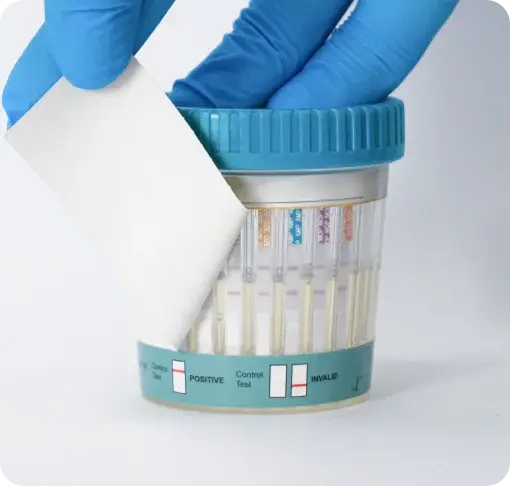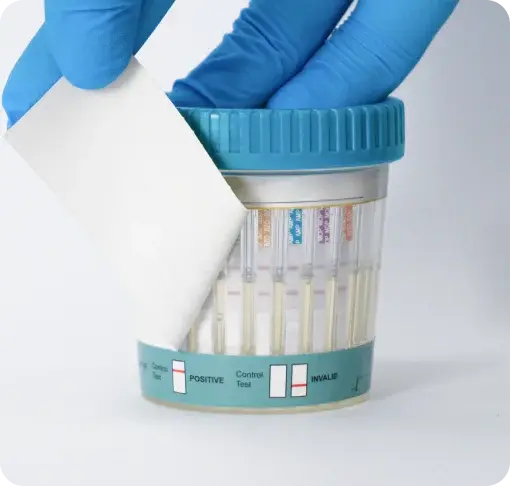Exploring the Realities of Urine Drug Testing for Today’s Workplaces
When it comes to workplace drug testing, urine testing has long been the gold standard. But as methods evolve and organisations strive to implement efficient, tamper-proof testing strategies, it's important to understand the true pros and cons of this traditional approach. Here's what you need to know, based on expert insights from AttoSure's recent webinar.
Pros of Urine Drug Testing
1. Wide Drug Detection Panel
Urine tests can detect a broad spectrum of drugs, including opiates (like codeine), cannabis, cocaine, amphetamines, benzodiazepines, and more. Some workplace panels even include additional substances such as tramadol and fentanyl.
2. Longer Detection Window
Compared to oral fluid testing, urine tests offer a longer detection window. While oral fluid typically detects drug use within the past 1-2 days, urine can go back up to a week, making it suitable for identifying longer-term patterns of use.
3. Policy Compatibility
Urine testing aligns well with many workplace testing policies and industry requirements. For example, infrastructure organisations like Network Rail and Sellafield have specific cut-off levels and standards for urine-based testing. Subcontractors operating on these infrastructures will be subject to drug testing to these standards.
4. Cost-Effective and Scalable
Urine cup testing is efficient, combining all test strips in one device. Compared to methods like dip cards (which require an additional collection cup) or single test strips (which would need 8-12 individual tests), the all-in-one cup is practical and economical.
5. Clear Interpretation Tools
Modern urine test cups are equipped with a built-in results guide, temperature strip for validating freshness, and labelled drug strips. This helps minimise misinterpretation, even if the tester is inexperienced.
Cons of Urine Drug Testing
1. Facility Dependency
Urine testing requires suitable toilet facilities for sample collection. In some sectors (e.g., construction or logistics), on-site facilities like portaloos may not be ideal or secure enough, leading some employers to switch to oral fluid testing.
2. Preparation Time
Preparing facilities to ensure acceptable conditions for testing is a consideration that must be taken. The preparation time for urine testing is typically longer than oral fluid.
3. Environmental Impact
Certain urine cup models, like the tamper-proof key cup, are bulkier, heavier, and less eco-friendly than standard urine cups. They also cost more to ship and use more plastic.
4. Complexities in Interpreting Certain Drugs
Not all pain medications show up on traditional opiate test strips. For example, Tramadol does not metabolise into morphine and therefore won’t register on an opiate strip. Instead, it requires a dedicated Tramadol test strip.
Tampering Risks and Tricks to Watch For
Even the best testing strategies must account for attempts to cheat the system. Urine testing is particularly vulnerable to the following tricks:
-
Dilution: Donors may attempt to water down their sample using liquids like bottled water or even soft drinks (yes, Fanta!). This can reduce drug concentration below detectable levels.
-
Substitution: Some may bring synthetic urine or another person's sample in a pouch with a heat pad to simulate a fresh sample.
-
Adulteration: Adding hand soap or bleach can render a test strip useless. It's essential to remove all soaps and aerosols from testing areas in advance.
-
Cold Samples: Always check the temperature strip on the cup (32–38°C is the norm) to confirm the sample is fresh. Never interpret a cold urine sample — it could be adulterated, substituted or diluted.
Specialist Tip
Always read the urine test results at the five-minute mark. Sloshing the cup around or leaving it too long can interfere with the wicking process and lead to inaccurate results.
Final Thoughts
Urine testing remains a staple in workplace drug testing due to its reliability, affordability, and comprehensive detection range. But it comes with operational demands and risks that employers must mitigate through proper training, facility preparation, and robust policy enforcement.
If your workplace is considering a urine-based testing strategy or wants to learn more: Contact AttoSure for expert-led solutions in urine, breath, or oral fluid testing.
Test your workplace drug testing knowledge.


